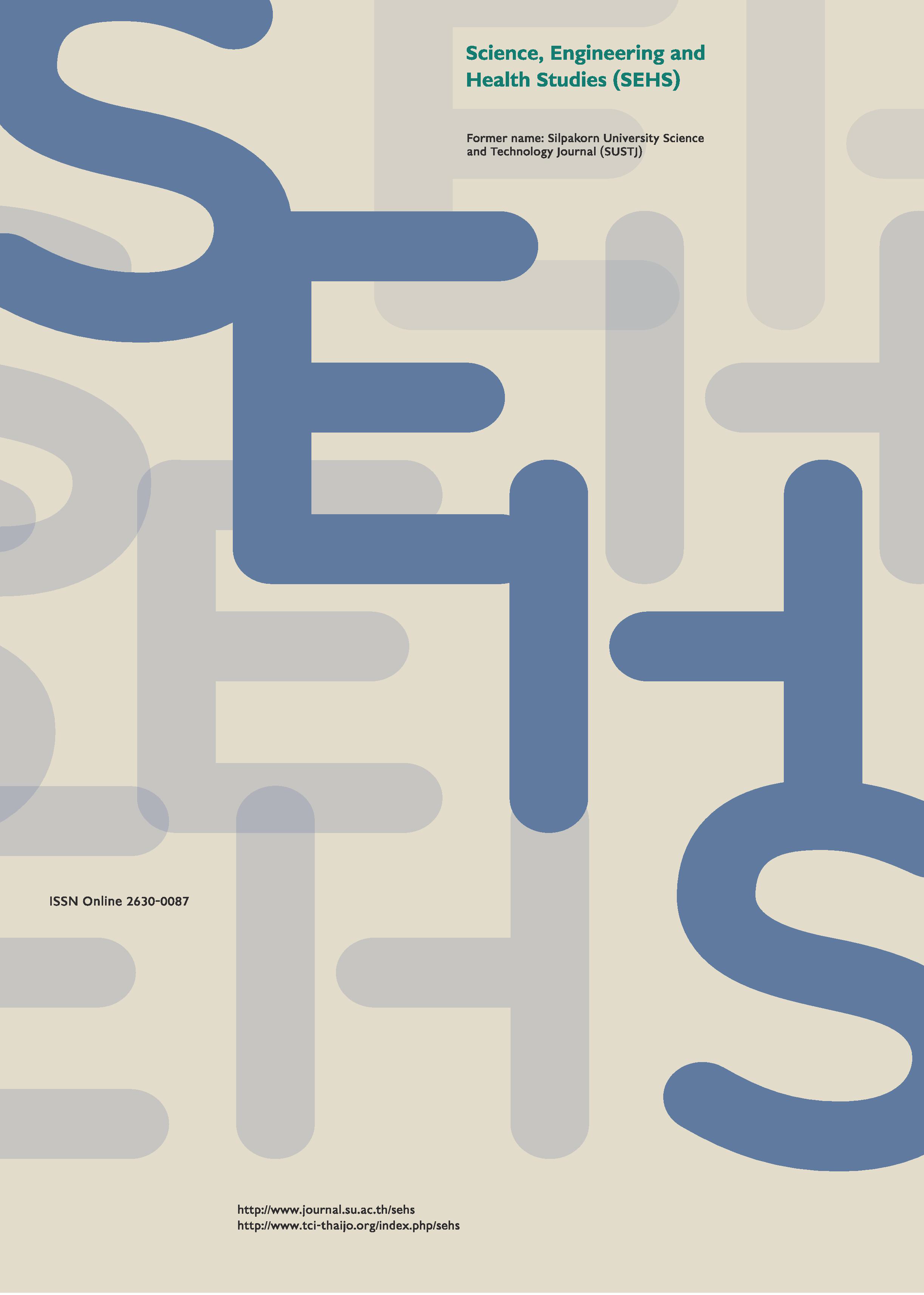A comparison between conventional and stratified antibiograms for antibiotic empirical therapy among the most bacterial pathogens
Main Article Content
Abstract
Antibiograms provide important data regarding antimicrobial selection during empirical therapy and for monitoring yearly trends in antimicrobial resistance in healthcare settings. Antibiograms tailored to hospital location or specimen type are called stratified antibiograms. This retrospective study compared conventional and stratified antibiograms for Escherichia coli, Staphylococcus aureus, Klebsiella pneumoniae, Acinetobacter baumannii, and Pseudomonas aeruginosa at the Hua-Hin hospital between January 2015 and December 2015. Stratified antibiograms were specific to the specimen type or ward were constructed after eliminating duplicate samples. Susceptibilities of 2,323 bacterial isolates of E. coli, S. aureus, K. pneumoniae, A. baumannii, and P. aeruginosa (32.6%, 15.6%, 15.4%, 16.0%, and 20.4%, respectively) were analyzed and percentage antimicrobial susceptibility did not differ between the stratified antibiogram for the first specimen alone and the conventional antibiogram. Similarly, percentage susceptibility between intensive care unit (ICU) and non-ICU wards or specimen type was comparable between the antibiograms. However, percentage susceptibilities of urinary P. aeruginosa isolates to amikacin, gentamicin, and ciprofloxacin were 60.6, 59.2, and 57.7, respectively, which was lower than that seen in the conventional antibiogram, namely, 84.1% (amikacin), 83.5% (gentamicin), and 80.1% (ciprofloxacin). Thus, stratified antibiograms, categorized by specimen type or ward, may be more useful in selecting appropriate empirical therapy.
Downloads
Article Details
References
Busani, S., Serafini, G., Mantovani, E., Venturelli, C., Giannella, M., Viale, P., Mussini, C., Cossarizza, A., and Girardis, M. (2017). Mortality in patients with septic shock by multidrug resistant bacteria. Journal of Intensive Care Medicine, 34(1), 48-54.
Clinical and Laboratory Standards Institute. (2016). Performance standards for antimicrobial susceptibility testing: Twenty-Sixth informational supplement. CLSI document M100-S26. Wayne, Pa.: Clinical and Laboratory Standards Institute.
Horvat, R. T., Klutman, N. E., Lacy, M. K., Grauer, D., and Wilson, M. (2003). Effect of duplicate isolates of methicillin-susceptible and methicillin-resistant Staphylococcus aureus on antibiogram data. Journal of Clinical Microbiology, 41(10), 4611-4616.
Joshi, S. (2010). Hospital antibiogram: a necessity. Indian Journal of Medical Microbiology, 28(4), 277-280.
Kuster, S. P., Ruef, C., Zbinden, R., Gottschalk, J., Ledergerber, B., Neuber, L., and Weber, R. (2008). Stratification of cumulative antibiograms in hospitals for hospital unit, specimen type, isolate sequence and duration of hospital stay. Journal of Antimicrobial Chemotherapy, 62(6), 1451-1461.
Lee, S. O., Cho, Y. K., Kim, S. Y., Lee, E. S., Park, S. Y., and Seo, Y. H. (2004). Comparison of trends of resistance rates over 3 years calculated from results for all isolates and for the first isolate of a given species from a patient. Journal of Clinical Microbiology, 42(10), 4776-4779.
Morata, L., Cobos-Trigueros, N., Martinez, J. A., Soriano, A., Almela, M., Marco, F., Sterzik, H., Núñez. R., Hernández, C., and Mensa, J. (2012). Influence of multidrug resistance and appropriate empirical therapy on the 30-day mortality rate of Pseudomonas aeruginosa bacteremia. Antimicrobial Agents and Chemotherapy, 56(9), 4833-4837.
Santimaleeworagun, W., Wongpoowarak, P., Chayakul, P., Pattharachayakul, S., Tansakul, P., and Garey, K. W. (2011). Clinical outcomes of patients infected with carbapenem-resistant Acinetobacter baumannii treated with single or combination antibiotic therapy. Journal of the Medical Association of Thailand, 94(7), 863-870.
Saxena, S., Ansari, S. K., Raza, M. W., and Dutta, R. (2016). Antibiograms in resource limited settings: Are stratified antibiograms better? Infectious Diseases, 48(4), 299-302.
Suttajit, S., Sumpradit, N., Hunnangkul, S., Prakongsai, P., and Thamlikitkul, V. (2013). Hospital infection control and antimicrobial stewardship programs among public and private hospitals in Thailand. Journal of Health Systems Research, 7(7), 281-295.
Thabit, A. K., Crandon, J. L., and Nicolau, D. P. (2015). Antimicrobial resistance: impact on clinical and economic outcomes and the need for new antimicrobials. Expert Opinion on Pharmacotherapy, 16(2), 159-177.


